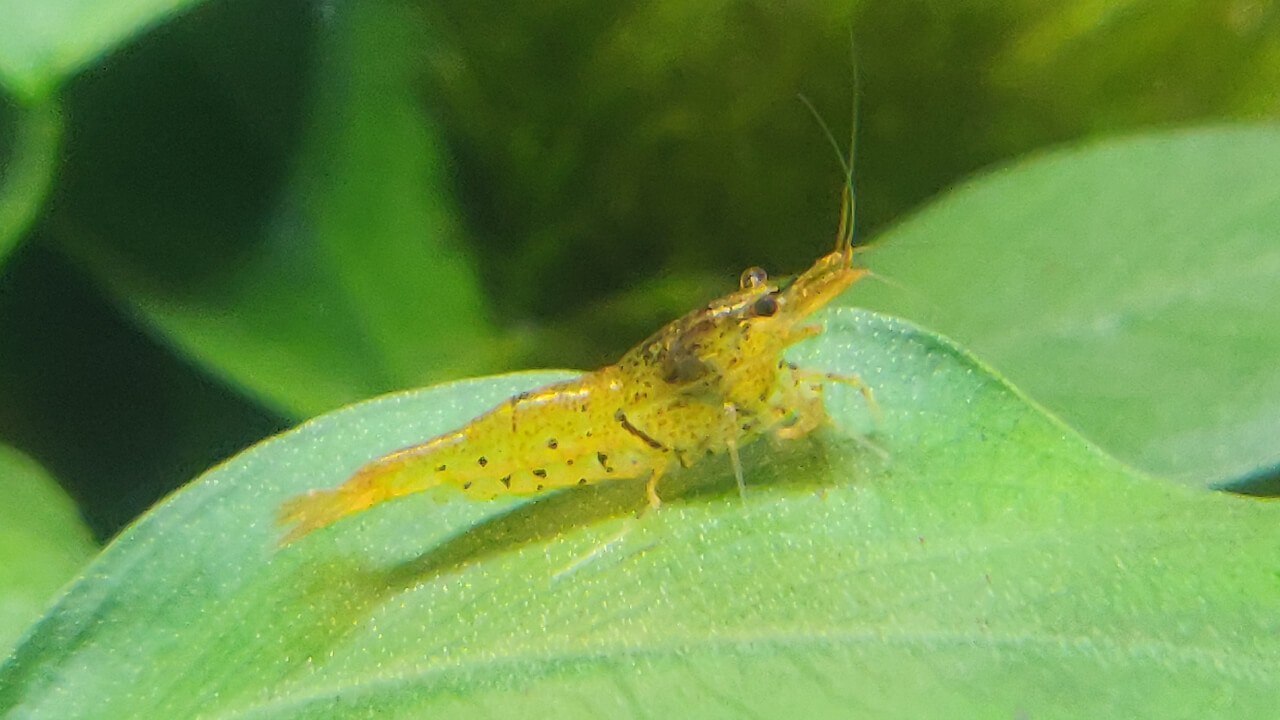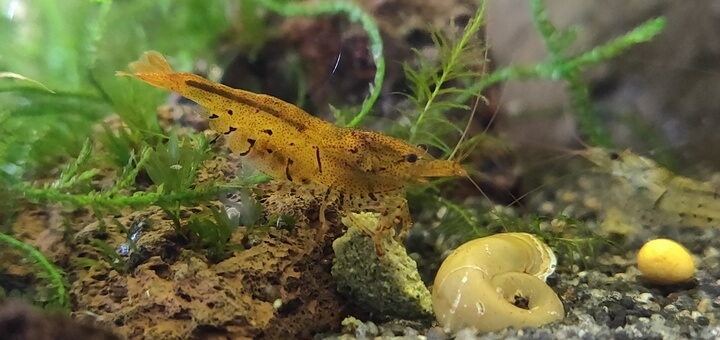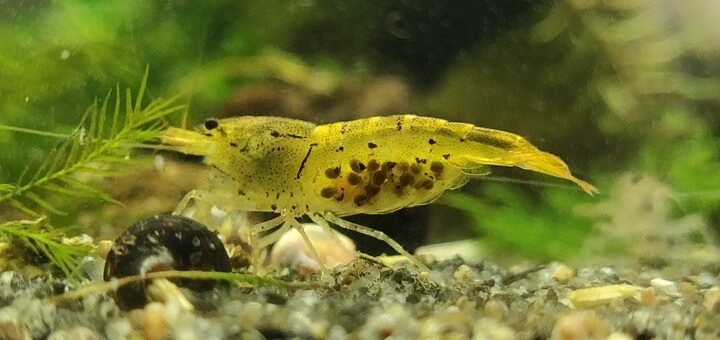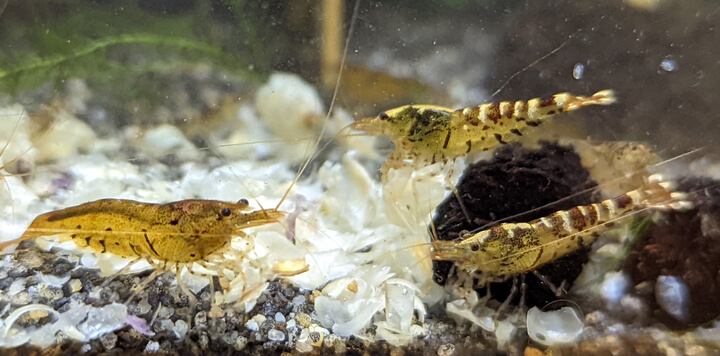Water parameters
- pH
- 6.5 - 8.0
- GH
- 4 - 10
- KH
- 1 - 8
- TDS
- 130 - 250
- Temperature
-
20 - 25 °C
68 - 77 °F
Facts
Difficulty level- Easy
Lifespan- 1 - 2 years
Origin- Taiwan
Adult size- 30 mm / 1.2 inches
Tangerine Tigers are a natural morph of the Caridina shrimp originating from Taiwan. They have a slightly translucent body with a strong orange or dark yellow tint and a set of dark brown tiger stripes down their back and sides.

An adult can grow to be around 3 cm (1.2 inches) in size.
Grades
The higher grade shrimp will likely be a strong orange colour with a good amount of heavy, dark tiger stripe markings.
Lower grade variants will have a weaker colour, closer to a yellow tint. They may also have have weaker tiger markings, almost having only a few spots instead of defined stripes.
Care
Despite being a member of the Caridina species, the Tangerine tiger shrimp, like most other tiger shrimp, is very hardy and can be expected to live for 1-2 years.
Their desired water parameters are a closer match to the Neocaridina species. The main difference from other Caridina is the ability to tolerate a much higher KH, in this case all the way up to 8 KH is perfectly acceptable.
Tangerine Tiger shrimp will only require a heater if you live in one of the colder parts of the planet. They should be totally happy if you keep the room they’re in close to the range of 20-25 °C (68-77 °F).
A general rule for freshwater dwarf shrimp is to have a minimum tank size of 5 gallons (19 liters), but 10 gallons (38 liters) and larger is recommended.
Diet
Most freshwater dwarf shrimp will eat the same types of foods. They’ll spend the vast majority of their time moving around the aquarium in search of tiny bits of food like biofilm and algae, which can grow on almost any surface. If your tank is mature and heavily planted, they’ll probably have plenty of natural food to eat already.
If you’re not sure they’re getting enough to eat, there are lots of different foods for your shrimp like algae wafers, bee pollen, shrimp pellets, blanched vegetables, etc.

Giving your shrimp a variety of different foods will make it more likely they’re getting all the nutrients they need to thrive.
Tank mates
A major benefit of the wide ranging water parameters required for these shrimp is that it allows for a huge range of other shrimp to share the same tank.
You can safely introduce different colour Neocaridina shrimp, like Red Cherry, or Blue Dream etc. Likewise you could also share their tank with other Caridina types and maybe generate interesting hybrids of baby shrimp.
Find the ideal water parameters and compatible tank mates for Tangerine Tiger shrimp.
It’s sometimes possible to keep smaller fish like Neon Tetras in a shrimp tank. There is a risk that the fish will see your shrimp as food however, so you should make sure they’ve got plenty of hiding places if you wanted to try this. The risk of being eaten is much higher for baby shrimp, so if you’re planning to breed your shrimp it’s highly recommended not to have any fish in the same tank.
Breeding

The image above shows what a berried Tangerine Tiger looks like, the eggs are clearly visible under their belly.
Variants of the Caridina Tiger shrimp are a popular choice for breeding with other non-tiger types.
For example, breeding a Crystal Red with a tiger can lead to a type called a Fancy Tiger. A Fancy Tiger with these parents could have the red and white colouring of their Crystal parent, but the shell pattern markings of their Tiger parent.

The image above shows a Tangerine Tiger on the left with some offspring on the right which were bred from Crystal Red and Tangerine Tiger parents. They’re not quite what you’d expect a Fancy Tiger to look like but you can clearly see the tiger stripe genes have been amplified, and some white stripes have appeared too.
There are no guarantees when it comes to breeding hybrids like this but introducing Tiger genes can definitely add some unique variety to the next generation.
If you’re trying to build up a healthy population, you can read our page on how to breed shrimp for extra help.


